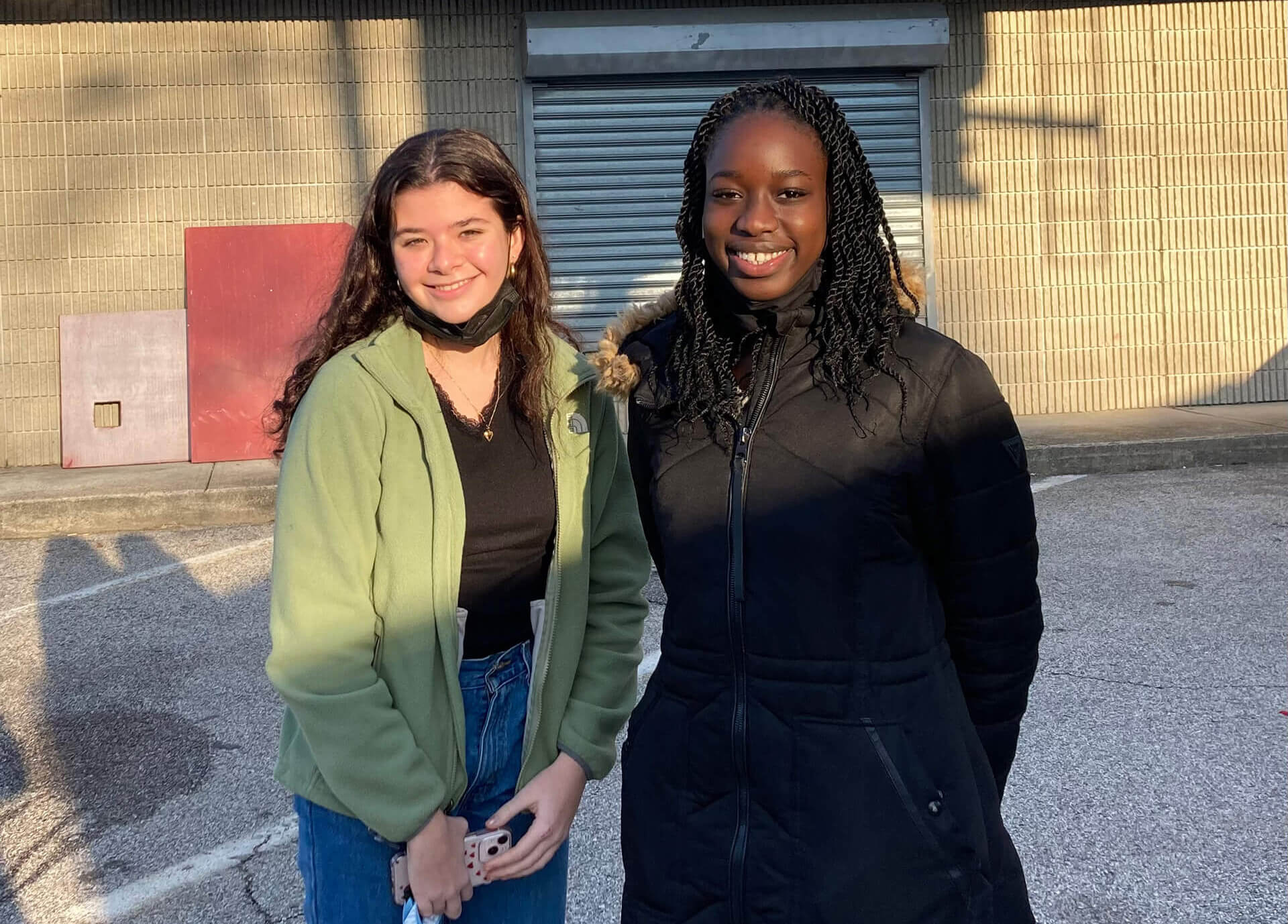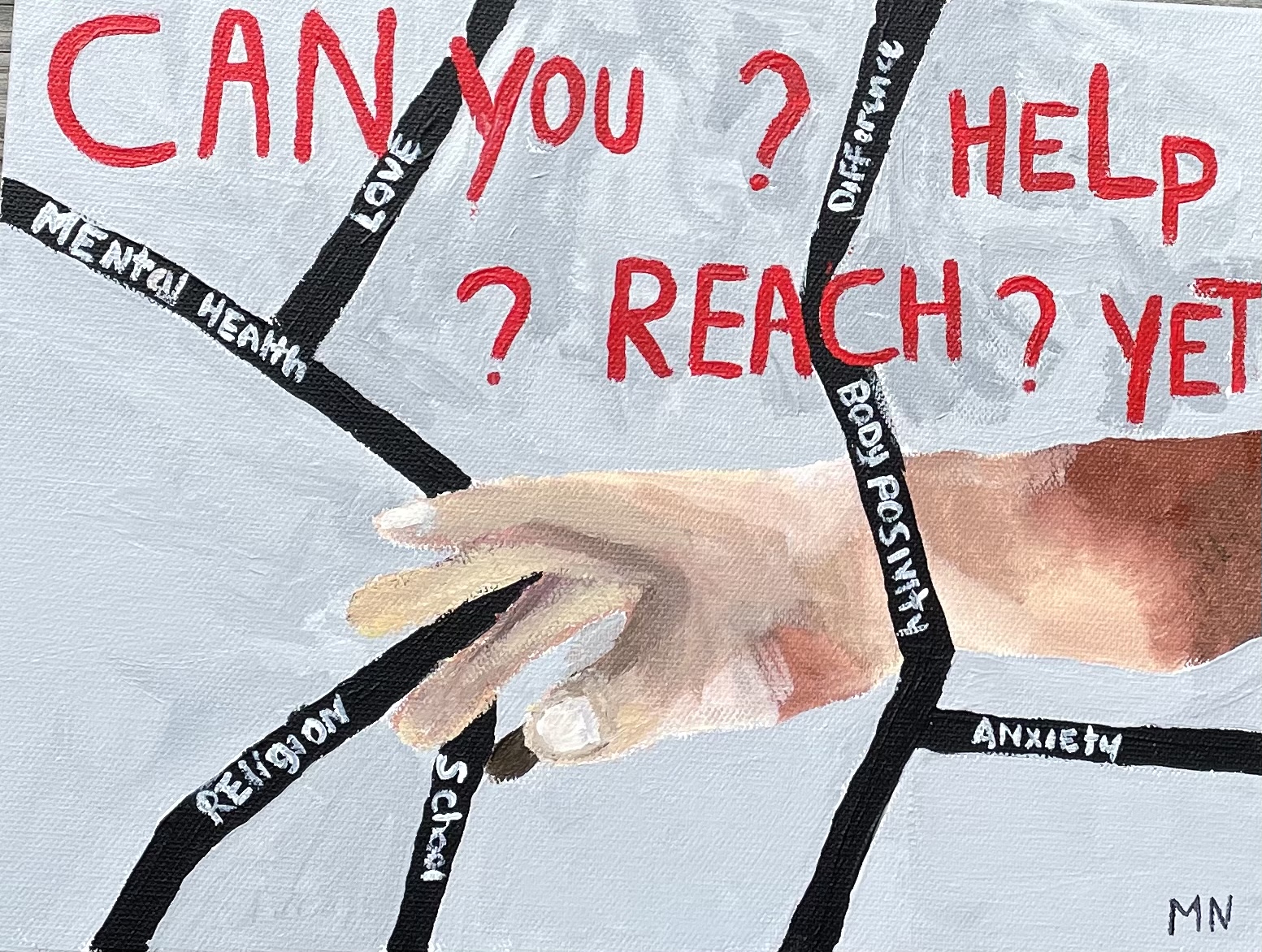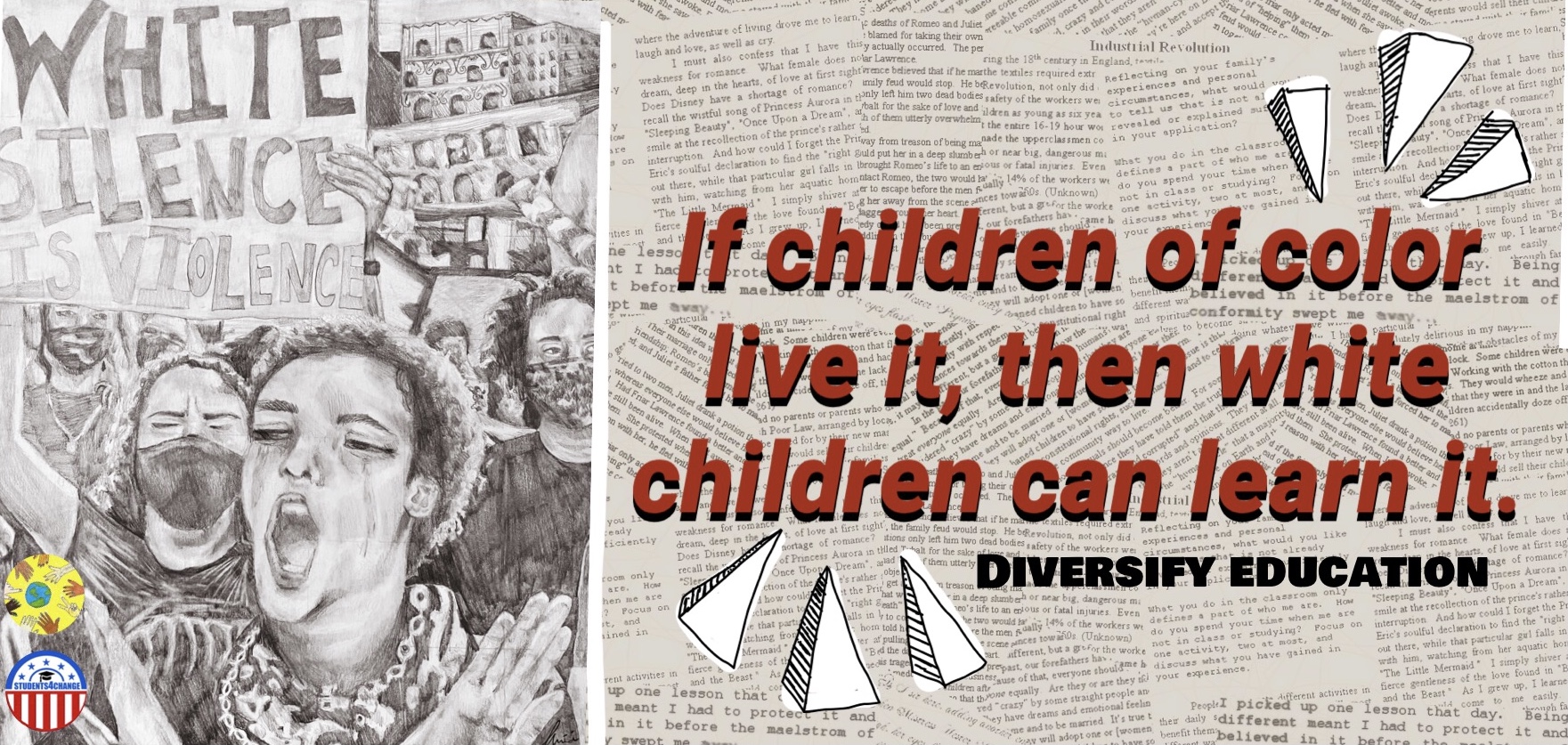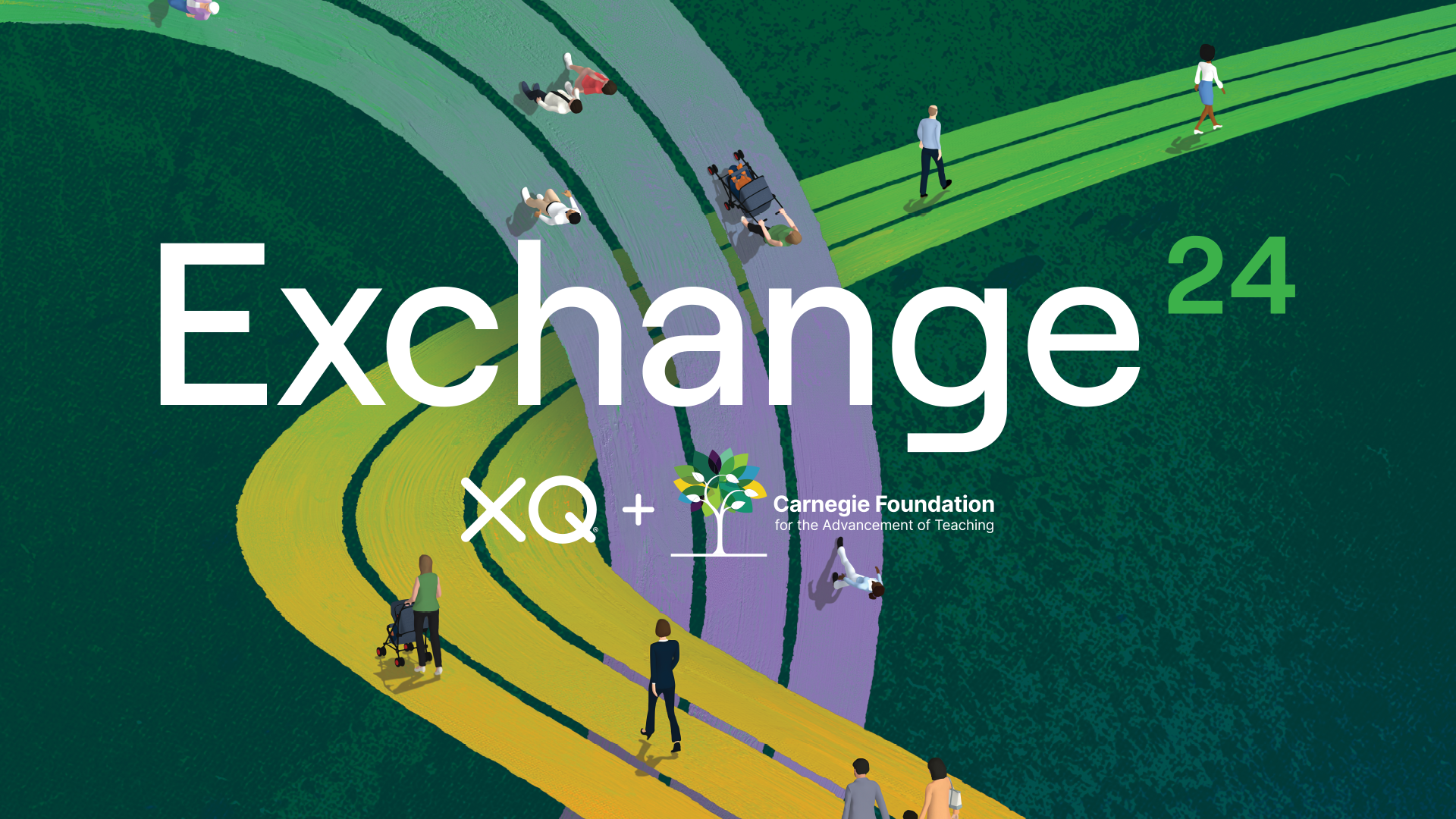What Rhode Islanders Saw in the New Billboards by Teens
Pheonix Grey was heading into a convenience store in North Providence when I asked him to…

Pheonix Grey was heading into a convenience store in North Providence when I asked him to look up at a new billboard about 20 feet above the parking lot. It said, “Can you reach help yet” in red letters, with three question marks hovering at different places within the text.
The billboard was created by Mame Ndoye, a 15 year-old sophomore at North Kingstown High School. Mame was among four teenagers from Rhode Island who won a challenge by XQ and For Freedoms to design billboards addressing issues in education and their communities.
I had come to Rhode Island to meet these winners now that their drawings and paintings were blown up to 14 feet by 48 feet for motorists and passersby to see during the month of February. I told Grey the artist was standing just a few feet away.
“It’s very nice, you painted that?” Gray asked her. “Yes,” Mame said, quietly.
Then the young man in a winter jacket paused and asked her a much more personal question. “Do you struggle with your own mental health?”
Another person might have dodged the question. But not Mame. “It was mostly during quarantine when I had to stay home all the time,” she explained, in her soft Senegalese accent.
Grey said he had his own struggles during the pandemic and also when he was younger. “I think so many people forget that being a teenager is hard,” he told her.
Afterward, Mame said Grey’s reaction was “amazing” and that it made her happy.
“I feel accomplished,” she said. “That I get my message out there and that some people relate to it.”
Mame said her billboard was inspired by feeling different—as one of very few Black students in her mostly White school, and as an immigrant. She wants school to feel like a more welcoming place, with more access to guidance counselors and supportive adults.
Olivia Wood, a junior at the same high school as Mame, had a much more direct message with her billboard: “If children of color live it, then White children can learn it. Diversify Education.”

Olivia said her artwork was motivated by the controversy over critical race theory among some adults in her community, and by hearing White students use the N-word casually in conversation. She said most people supported her message, but a few had made negative comments about her artwork on social media before it was displayed as a billboard.
Now that her work is high above Page Street in downtown Providence, Olivia and I went to see it in person. We stopped Martha Krollman, who was getting out of her car, to ask what she thought. She seemed deeply moved and said it was a message more people need to hear.
In this age of social media, I wondered how Olivia and Mame felt about seeing their messages displayed on billboards. Nobody can click “like” or leave their comments.
“I’m okay with not getting the feedback,” Mame said. “I’m just happy that people will be able to see it and make their own opinion.”
Olivia found the billboard medium refreshing.

“On social media, you can scroll,” she said. “But there’s people who drive by this, like, every day. And it probably makes them think every day. And maybe they want to know more about it, which is, I think it’s really important. And it’s something that social media can’t do.”









